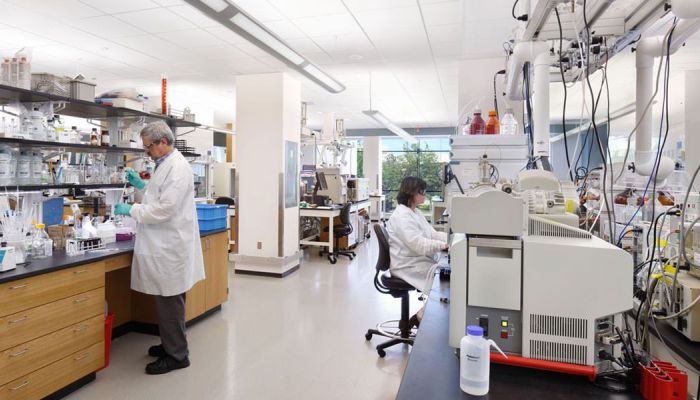Medical Marijuana
Different Extraction Methods & Your End Product
Let’s face it: society is becoming increasingly health-conscious. For some people, smoking is an unacceptable risk and they need to find an alternative way to get stoned. And it’s not only this that’s drawing people away from traditional flower— but there are also connoisseurs of cannabis on a quest for the purest, the strongest, or the tastiest product. More than ever before, there is a focus in the cannabis community on something other than the high. This is the brave new world of extractions.
It’s not a simple world. Shatter, CO2 Honey oil, Distillate, Phoenix Tears, Cherry oil, Hash, and BHO oil are only a few of the terms that cause would-be adventurers to scratch their heads. The truth is, extraction is a scientific process, and subtleties of the end results aren’t necessarily easy to wrap your head around. Well, don’t fear. We’ve got you covered.
Let’s break down the three leading extraction methods.
SUPERCRITICAL CO2 EXTRACTION
Supercritical CO2 extraction is a process whereby the valuable properties of the cannabis plant are extracted using carbon dioxide above its critical threshold—i.e. at a temperature and pressure where distinct liquid and gaseous phases do not exist.
Carbon dioxide is the preferred solvent used in supercritical fluid extraction because it is easy to work with and dispose of (it simply evaporates at room temperature) and—more importantly—it is naturally occurring, non-toxic, and already present in large quantities in the human body. Consider that you have exhaled a remarkable amount of carbon dioxide just while reading this article. Carbon dioxide is therefore safe and comes with a low environmental impact. Hexane, butane, propane, and other hydrocarbons are also candidates for extraction, but these are much less desirable as they can be toxic and are typically highly flammable.
In terms of handling, supercritical CO2 extractions are less thick than other extracted oils and may, therefore, be more convenient to use depending on how you’re trying to use it. For example, thinner oils can be easier to apply with a syringe, whether you’re adding it to flower or applying it topically.
Supercritical CO2 extractions can reach up to 80% THC content, making it head-and-shoulders much more potent than any flower on the market. By contrast, even the strongest flower tends to cap at around 30%.
Performance isn’t everything though. Quality extractions will maintain a significant degree of the unique character of the given strain, and this is achieved by also extracting, preserving, and reintroducing terpenes. Long story short, terpenes (in this context) describe organic compounds found in the cannabis plant that carry the distinct flavour or aroma of particular strains. In supercritical CO2 extraction, these terpenes are extracted first, at subcritical temperatures and pressure, and then reintroduced to the final product, resulting in an extraction that carries many of the same characteristics as the original plant.
BUTANE EXTRACTIONS
Butane extractions, otherwise know as hydrocarbon extractions, are one of the more common methods of extracting cannabinoids and terpenes into a finished concentrated product such as shatter, BHO oil or other full-spectrum extracts, such as thc diamonds and terp sauce.
The process involves filling a stainless steel column with the plant material and running butane through a closed circuit under pressure to wash out the cannabinoids and terpenes. The butane gets recycled back into the chamber for subsequent uses. We end up with a liquid-like concentrate that is ready to be cured.
The curing process of shatter involves purging the remaining butane out of the product in ovens for several days, temperatures typically range 35-40c during this process.
In the end, you are left with a solid-state concentrate that can be snapped. Depending on the % number of terpenes, the product will range from extremely brittle (low terpene profile) to very soft (high terpene content). The sweet spot is in the middle, with a product that can snap or be slightly bendy. The colours can range from dark brown to almost translucent, with the vast majority favouring an amber-like finished product. The thc content of shatter can range 50-80%.
Other extractions such as terp sauce and thc diamonds are also extracted by butane extraction, but the process is slightly different and takes a bit longer to achieve. It involves separating the terpenes from the thc under pressure to obtain a highly concentrated form of solid-state thc up to 99%.
DISTILLATE EXTRACTIONS
Distillation is a common process, used in a variety of industries to achieve essentially the same thing: the selective separation of substances in a liquid mixture. The process of distilling cannabis extractions is remarkably similar to how whiskey is made.
Distillation is actually quite simple. Cannabis flower is added to an ethanol solution, which is then heated. The cannabinoids are isolated and extracted by targeting their precise boiling points. These sought-after compounds boil off and then are condensed back into oil. Similar to supercritical CO2 extractions, distillate extractions will have terpenes extracted first at lower temperatures, and reintroduced to the final product. When distilling cannabis, producers almost exclusively use food-grade ethanol as a safe liquid base.
Pure distillate extractions are quite thick—nearly as thick as molasses. This can be a good thing or a bad thing depending on your desired method of consumption. Many consumers champion distillate extractions as an easy to manage.
Because of the precision involved in the process, when done correctly, distillate extractions can be exceedingly pure. In fact, it has been argued that the distillation process results in the absolute purest form of cannabis oil, as the evaporation of compounds removes them entirely from the liquid base. Distillate extractions can measure upwards of 94% pure THC! Good distillate extractions will yield 99%+ cannabinoids.
PHOENIX TEARS
Phoenix Tears, or Rick Simpson Oil, is another popular extraction. Similar to supercritical CO2 extractions, Phoenix Tears use a solvent to extract cannabinoids from raw flower.
Phoenix Tears were invented when Rick Simpson soaked cannabis in pure isopropyl alcohol, and then evaporated the solvent away, leaving behind a dark, sticky liquid that looked almost like tar. In this extraction method, the isopropyl alcohol draws out the cannabinoids, and after several cycles of dissolution and straining, the remaining plant material can be thrown out. The alcohol and cannabis solution is then heated to evaporate the solvent, and then only the good stuff remains.
This alcohol-based extraction may seem less complex than the others, but it is still best left to professionals, as isopropyl alcohol is combustible, and the evaporation process therefore takes great care.
Phoenix Tears are a particularly popular extraction for topical treatment, as the thick consistency makes it easy to apply to specific areas. Phoenix Tears are also commonly consumed orally.
Phoenix Tears THC content can easily surpass 50%. While that is not as high as the other extraction methods discussed here, the simplicity of the process contributes to Phoenix Tears’ lasting popularity.
So there they are—three of the most common extraction methods today. To recap:
- Supercritical CO2 extraction is achieved through a highly scientific process that uses heat, pressure, and carbon dioxide to create a relatively thin oil that can reach purity levels of 80%.
- Butane extraction involves the use of a closed-circuit system that removes cannabinoids and terpenes from flower materials and recaptures the butane for later use. The thc content of butane extractions has a wide range of 50-99% depending on the starting material and the processing.
- Distillate extraction uses heat and a liquid base to boil off desired cannabinoids which are then condensed back into a viscous oil. Distillate extractions may be the purest on the market, with THC levels of up to 94%.
- Phoenix Tears (or Rick Simpson Oil) is extracted using isopropyl alcohol. The solvent is then evaporated, leaving a thick oil that is ideal for topical application. Phoenix Tears will typically have a THC content of around 50%.
The moral of the story is that not all extraction methods are created equal, and the process itself has a lot to do with the end product.
There are a lot of varieties of extractions out there, and there has never been a better time to enter the world of cannabis extractions.


